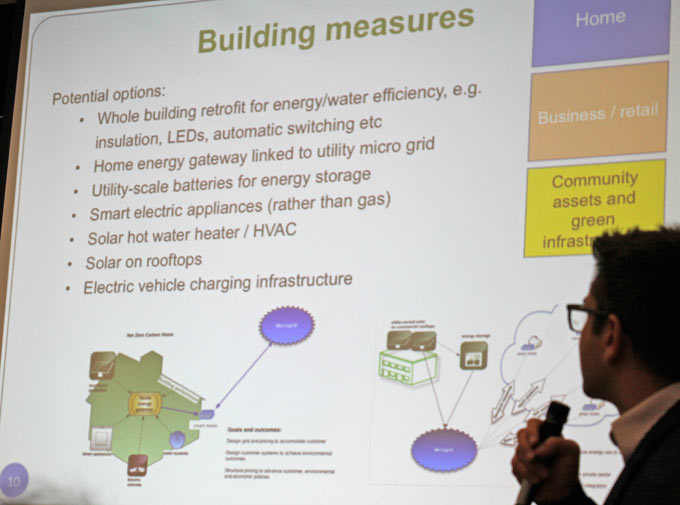Sustainability Survey March 14

At our March 9 meeting the Mayor's Office made a presentation on ideas for a net zero and ultra low emissions project and announced a survey they are doing. Due to the timing of available funds, they need Porter Ranch residents to complete the survey by March 14. Their introductory comments:
The Aliso Canyon Gas Leak has had a devastating effect on Porter Ranch, Chatsworth, Granada Hills and Northridge. Mayor Eric Garcetti and his team have explored with the community the possibility of using a proportion of any settlement funding to create LA's first net zero energy* and ultra low emission neighborhood. Any program of this type would be separate and in addition to any individual settlements homeowners and businesses may receive.
As we develop the concept of a net zero energy and ultra low emission neighborhood we will be guided by the following principles:
1. Restore pride in the neighborhood(s);
2. Improve home values;
3. Improve public spaces, infrastructure and community facilities; and
4. Reduce energy and water costs as well as dependency on natural gas
To ensure that any proposal fully reflects the priorities and concerns of the local communities involved we want to canvass your views on what a net zero energy and ultra low emission neighborhood should include and where it should be focused. We would be grateful if you could complete the below questionnaire by the end of Monday March 14th, 2016.
Sustainability Presentation
Take the Survey Now
Rulemaking Input March 18
Also of importance is the Department of Conservation's request for feedback as they overhaul regulations governing all gas storage facilites in California, including Aliso Canyon. They are in the "pre-rulemaking" stage, meaning the concepts are being circulated to stakeholders and communities before the regulations are drafted in order to gather input. Input now will play a significant role in shaping them. Their introductory comments:
The Department of Conservation, Division of Oil, Gas, and Geothermal Resources (DOGGR) is preparing to undertake rulemaking to make significant revisions to the regulations governing the Division's Gas Storage Program. This rulemaking effort will build upon the requirements adopted by emergency rulemaking to update regulations governing the Gas Storage Program to address concerns identified by the Division and other key stakeholders. The purpose of this document is to outline the Division's immediate regulatory goals, and to solicit specific input on how best to accomplish these goals. Although the Division is looking for any and all input on these questions, suggestions about a specific regulatory approach are most useful if they are supported by discussion of the costs and benefits associated with the approach. The Division will be accepting comments until March 18 at 5pm. Please see the Regulatory Goals & Questions for information about submitting comments.
View the Regulatory Goals and Questions Document
DOGGR Replies to Questions
Prior to the Community Advisory Committee meeting with DOGGR on February 18, we asked you to submit your questions and we thank you for sending them. We forwarded them to DOGGR and have been awaiting their response. Unfortunately, due to the nature of some of the questions and their submission by litigants, the responses are requiring significant research and review by their legal team. Further, DOGGR has received a significant number of inquiries outside of our process, so their queue is significant. We have received more answers to more general questions
View DOGGR Answers
Status of Health Department Home Inspections
Many questions were raised about inspecting homes. The Health Department is working to identify an inspection protocol to make sure that inspections are conducted effectively. This has turned out to be significantly more complicated than expected, hence the delay.
Fenceline
The Fenceline President was on hand to explain that the fenceline monitor is set up in a resident's backyard. It functions in somewhat the same way as your garage door opener with two sensors and a light in between that identifies gas. The monitor is currently about 30 feet in length. They have the technology to set it up to be a quarter of a mile in length. It can also be set up to send notifications to individuals when monitoring levels are reached as a warning. View Fencline Data